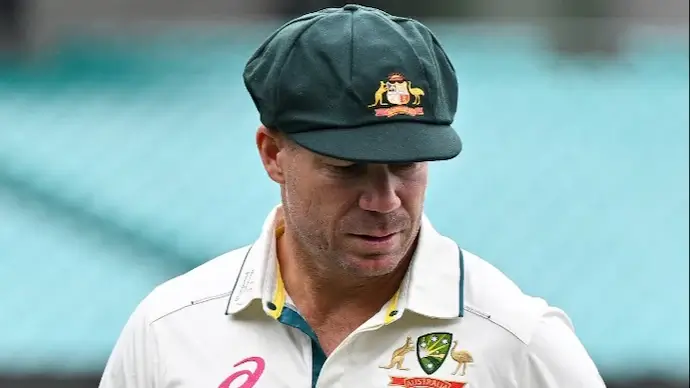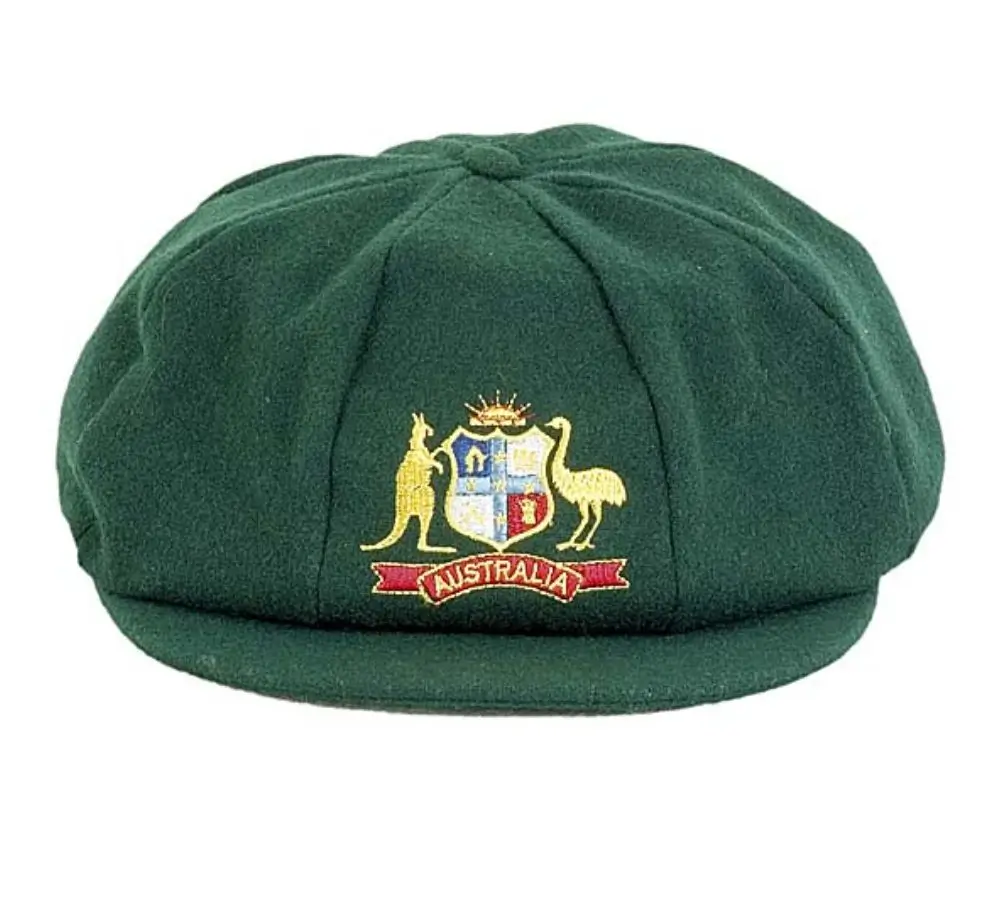Cricket in Australia isn’t just a sport—it’s a way of life, and nothing embodies that more than the Baggy Green cap. This floppy, dark-green headgear has been worn by Test cricket players for over a century, carrying tales of triumph, oddity, and national spirit. Let’s dive into 10 fun facts about its traditions that’ll surprise even the biggest cricket fans.
The Baggy Green isn’t just a fashion statement; it’s a relic of Australian cricket history. First donned in the early 1900s, it’s made of thick wool with the national coat of arms stitched on. As per the Australian Government’s culture portal, it’s a badge of honor handed to every Test debutant.
What’s wild is its “baggy” fit wasn’t planned—it just happened because of loose tailoring back then. Players loved it, though, and it stuck as a quirky tradition. Today, it’s a symbol fans adore and players cherish.
The First Baggy Green Moment
Historians trace its origins to the 1901-02 Ashes series against England. The cap was a practical choice for sun protection, but its oversized look turned heads. Soon, it became the team’s unofficial mascot for the godfathers of cricket.
Ever wonder why it’s wool? Early makers chose it for durability, not style. According to the National Museum of Australia, some caps even survived decades of wear, a bit frayed, but proudly worn, and they are again in the finals against South Africa in the World Test Championship.
The Hand-Me-Down Ritual
One of the coolest Baggy Green traditions is how it’s given to new players. A former Test cricketer—often a legend—presents it in a quiet, emotional ceremony before a debut. It’s like a secret handshake that ties generations together.
Mark Taylor kicked off this ritual in the 1990s, making it a formal rite. Imagine getting your cap from Steve Waugh—talk about pressure! It’s a moment players never forget in the Australian team.
Tears and Cheers
Some debutants, like Michael Clarke, teared up during the handover. The cap isn’t just gear; it’s a promise to uphold Aussie cricket’s legacy. That weight hits hard.
The presenter often shares a story, like how they got their own cap. It’s a tradition that keeps the Baggy Green’s spirit alive. No other sport does it quite like this.
Weird Ways Players Used It
The Baggy Green isn’t always treated like a sacred relic—some players got creative with it. Bill Lawry once used his to scoop pigeon droppings off his balcony, true story. Then there’s Bill Ponsford, who wore his while painting his fence.
These oddball tales show the cap’s charm—it’s not untouchable; it’s personal. Players make it their own, quirks and all. As BBC Sport notes, it’s this human touch that fans love like a craze for the Indian team.
The Bushfire Hero Cap
Shane Warne’s Baggy Green took a wild turn when he auctioned it for bushfire relief in 2020. It fetched over Australian$1 million, proving its worth beyond the field. Talk about a cap with a cause!
Ponsford’s paint-splattered cap still exists in a museum, a colorful piece of cricket lore. It’s a reminder that even legends can be a bit messy. Who knew cricket caps could multitask?
The Numbers Behind the Cap
How many have worn the Baggy Green like Adam Gilchrist and Glenn McGrath? Over 450 players since 1877, when Test cricket began Down Under. Each cap has a number—like Steve Waugh’s 301—linking players to history. Here’s a quick look at some stats:
|
Year |
Event |
Player Count |
|---|---|---|
| 1877 |
First Test match |
11 |
| 1932 |
Bodyline series |
16 |
| 2005 |
Shane Warne’s 600th wicket |
1 (Warne) |
| 2020 |
Latest debutants |
3 |
These numbers, sourced from Cricket Australia’s archives, show the cap’s enduring legacy. It’s not just a hat—it’s a tally of grit.
The Million-Dollar Cap
Warne’s A$1 million sale wasn’t a fluke—Don Bradman’s cap hit A$425,000 in 2003. Collectors go nuts for these woolly wonders. It’s cricket’s version of fine art, even sometimes teams like Zimbabwe have come better off than them to win over them – that is what makes Cricket interesting.
The numbering started in 1993, but older caps got retrofitted with numbers. It’s a neat way to track every wearer. Imagine owning cap No. 1!
Why It’s More Than a Hat?
To Aussies, the Baggy Green is a cultural heavyweight, not just cricket gear. Players wear it during the first session of a Test as a nod to tradition. Even all-rounders in the Australian Cricket team have bowed to that rule.
It’s a symbol of mateship and resilience—values Aussies hold dear. As ESPN states, its mystique grows with every match. No wonder fans snap up replicas like hotcakes.
The Fan Frenzy
Replicas flood markets after big wins, but the real ones? Priceless. Kids dream of wearing one, even if it’s just pretend.
During the 2005 Ashes, players wore it proudly despite the loss. It’s a rallying cry—win or lose, the Baggy Green stands tall. That’s Aussie spirit for you.
The Baggy Green’s Role in Australian Identity
The Baggy Green isn’t just cricket gear—it’s a piece of Australia’s soul. Worn by legends and loved by fans, it’s a symbol of national pride. According to the Australian Institute of Sport, it’s one of the country’s most recognized sporting icons.
It’s not just about the game; it’s about belonging. Players say wearing it feels like carrying the hopes of a nation. That’s heavy, but it’s what makes Aussie cricket special.
A Symbol of Unity
In a country obsessed with sport, the Baggy Green unites fans from all walks of life. It’s a shared story—everyone knows what it means. That’s rare in today’s world. The cap’s influence spills over into art, music, and even politics. Politicians have been known to mention it in speeches, tapping into its cultural clout. It’s more than a cap; it’s a conversation starter.
Famous Baggy Green Moments in Cricket History
The Baggy Green has seen its share of epic moments by players like Ricky Ponting and Marnus Labuschagne. Take the 1932 Bodyline series—players wore it while facing brutal tactics from England. It was a test of courage, and the cap was there for it all.
Then there’s Steve Waugh’s last-ball century in 2003, cap on head, crowd roaring. These moments are etched in cricket lore, and the Baggy Green is always part of the picture.
The Bodyline Battle
The 1932-33 series was brutal, but the cap stood firm. Players like Bradman wore it as a badge of defiance. It’s a reminder of cricket’s grit. Steve Waugh’s 2003 Sydney Test heroics are legendary. His cap, sweat-soaked and worn, became a symbol of never-say-die spirit. Fans still talk about it.
The Evolution of the Baggy Green Design
The Baggy Green hasn’t always looked the same. Early versions were darker, almost black, with a simpler crest. Over time, it lightened to its current green, and the coat of arms got fancier.
Materials changed too—early caps were heavy wool, but modern ones are lighter, though still wool. As per the Australian Sports Commission, the design tweaks reflect cricket’s evolution.
From Black to Green
The shift from near-black to green happened in the 1920s, making it stand out on the field. Players liked the change—it felt more Aussie. The coat of arms has evolved, with more detail added over the years. It’s a nod to national pride, stitched right on the front. That’s craftsmanship.
The Baggy Green in Modern Cricket
The Baggy Green remains a fixture in today’s game, but it’s not without change. Modern players wear it less often, swapping it for helmets during intense sessions. Yet, its symbolic power hasn’t faded—debutants still get it, and fans still cheer it like they do for Virat Kohli or MS Dhoni.
Technology’s crept in too. Some caps now have UV protection woven into the fabric, blending tradition with practicality. It’s a nod to the future while honoring the past.
Helmets vs. Tradition
Helmets dominate for safety, but the Baggy Green gets its moment, usually on Day 1 of a Test. It’s a compromise that keeps the legacy alive. UV-treated wool? That’s 21st-century Baggy Green. Players like it, and it shows the cap can evolve without losing its soul.
Controversies Surrounding the Baggy Green
No icon escapes drama, and the Baggy Greens had their share. In 2018, the ball-tampering scandal rocked Australian cricket, and some questioned the cap’s “honor.” Players like David Warner faced heat, but the cap endured.
Then there’s the debate over its use—some say it’s outdated, a relic in a fast-paced game. Yet, its defenders argue it’s timeless, not old-fashioned.
The Sandpaper Stain
The 2018 “Sandpapergate” saw the Baggy Green take a PR hit. Fans wondered: Does it still mean integrity? The answer’s still yes for most, as they have strong ground-level cricket like India.
Critics call it a dinosaur; fans call it a treasure. The debate rages, but the cap’s still here, floppy and proud.
The Future of the Baggy Green
What’s next for the Baggy Green? It’s hard to say, but it’s not going anywhere soon. Cricket Australia vows to keep the tradition, even as the game globalizes. New players will still get their caps, numbered and storied.
Climate’s a factor—wool might give way to greener fabrics. But the spirit? That’s set in stone. The Baggy Green will keep flapping on Aussie heads for years to come.
Going Green (Literally)
Sustainable materials could replace wool someday. It’d be a big shift, but the cap’s essence would stay intact. As cricket grows worldwide, the Baggy Green might inspire other teams. Could it become a template for sports pride? Time will tell, as we see New Zealand dominating now in ICC Events.
Conclusion
The Baggy Green cap is a legend with layers—quirky, historic, and deeply Aussie. From its woolly roots to modern tweaks, it’s weathered controversies and design shifts while holding tight to its role in cricket and culture. Whether it’s fetching millions, sparking debates, or inspiring future stars, this floppy green treasure keeps proving its worth. It’s not just a cap—it’s a story that’s still being written.
The Baggy Green cap weaves a wild tapestry of Australian cricket—part tradition, part oddity, all heart. From its woolly beginnings to million-dollar auctions, it’s a story of players, fans, and a nation’s love for the game. Next time you see that floppy green cap, you’ll know it’s more than meets the eye.








